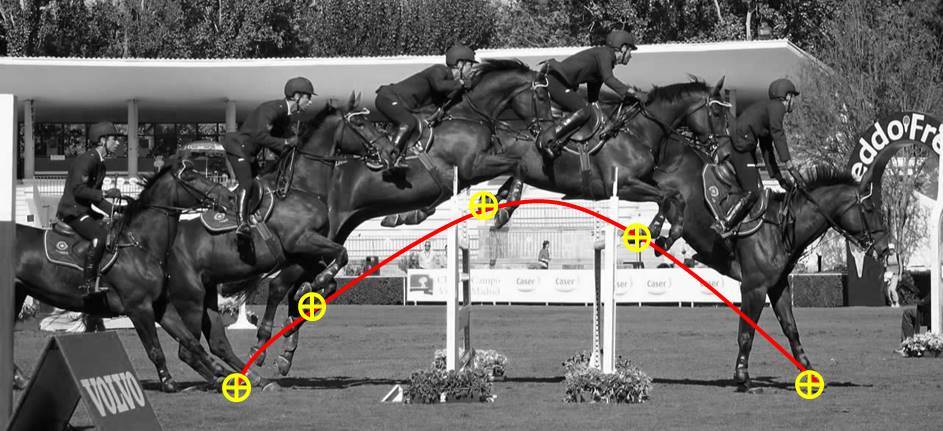As you sat in the lecture hall at a major farriery convention or clinic have you ever wondered to yourself “what on earth has does that mean”? and “what has that got to do with shoeing horses”?
Over the next few issues of our blog and with the help of that excellent text “Biomechanics for Dummies” by Steven T. McCaw, PhD. we will try to illuminate the farriery meaning and relevance of some common exprssions used in the the branch of physics known as BIO-MECHANICS.
To understand the relationship between trimming and shoeing of the equine foot farriers should have a basic understanding of the science of bio-mechanics and how mechanical efficiency can influence the health and shape of the hoof and its associated structures. Farriers deal directly with these subjects, perhaps unknowingly, on a day to day basis when shoeing horses.
Biomechanics is the science applying the principles of mechanics to a living body. Biomechanics is used to study and explain how and why living things move as they do, including the importantly, farriers,, the movements of the horse.
Each branch of mechanics is divided into two divisions, one focused on describing the motion (kinematics) and the other focused on the forces that cause motion (kinetics).
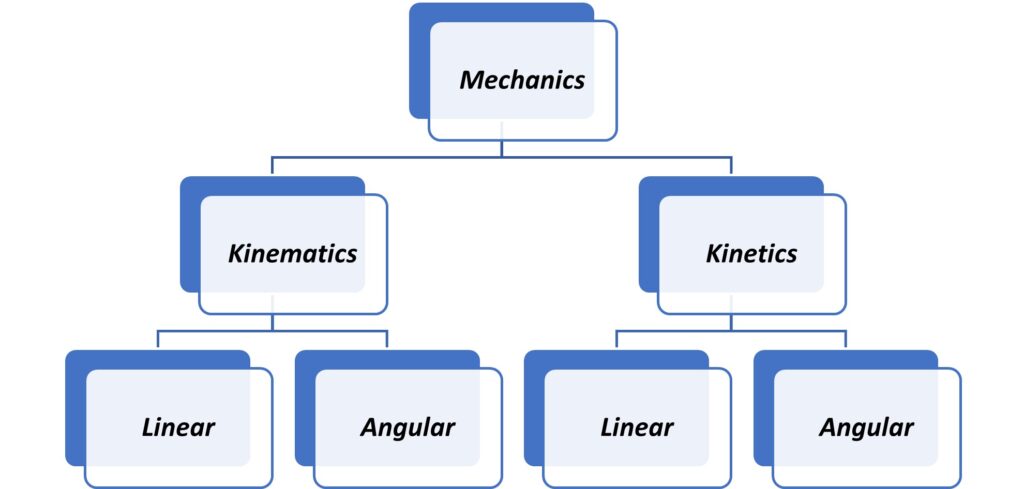
Mechanics
Mechanics is a field of study in the area of physics. It focuses on the effect of forces acting on a body. A force is basically a push or a pull applied to a body that wants to make it move. Mechanics looks at how a body is affected by forces applied by muscle, gravity, and contact with other bodies.
In the case of a horse in motion, the term “body” could be used to describe the whole horse or could also be used to describe an individual body segment such as the limb, digit, or foot, or even an individual bone within a segment. The hoof capsule is a three dimensional multi-directional reinforced composite structure and its shape and morphology are influenced by the opposing forces its interaction with the ground (ground reaction force) and descending body weight acting on it both during statically and during locomotion. The external shape of the hoof capsule reflects the distribution and magnitude of the stresses and strains that occur in the tissues and structures of the hoof during weight bearing and locomotion. Individual conformation will influence the orientation of the distal limb segments and as such is fundamentally related to the bio-mechanics of the hoof and its ability to distribute and dissipate and absorb forces. To study these forces the mechanical structure of the foot and its associated anatomical structures three types of mechanical behaviour can be explored in both a static and dynamic state.
Angular kinematics
Angular kinematics describes angular motion, or motion involving rotations. Angular kinematics are used to describe the pitch, yaw and roll of the foot, Angular distance and angular displacement describe how far a body rotates. Similar to linear kinematics, angular distance means how far a body or segment rotates, while angular displacement means how far it rotates in a specified direction. Angular speed is just how fast the body rotates, but angular velocity refers to how fast it rotates in a specific direction.
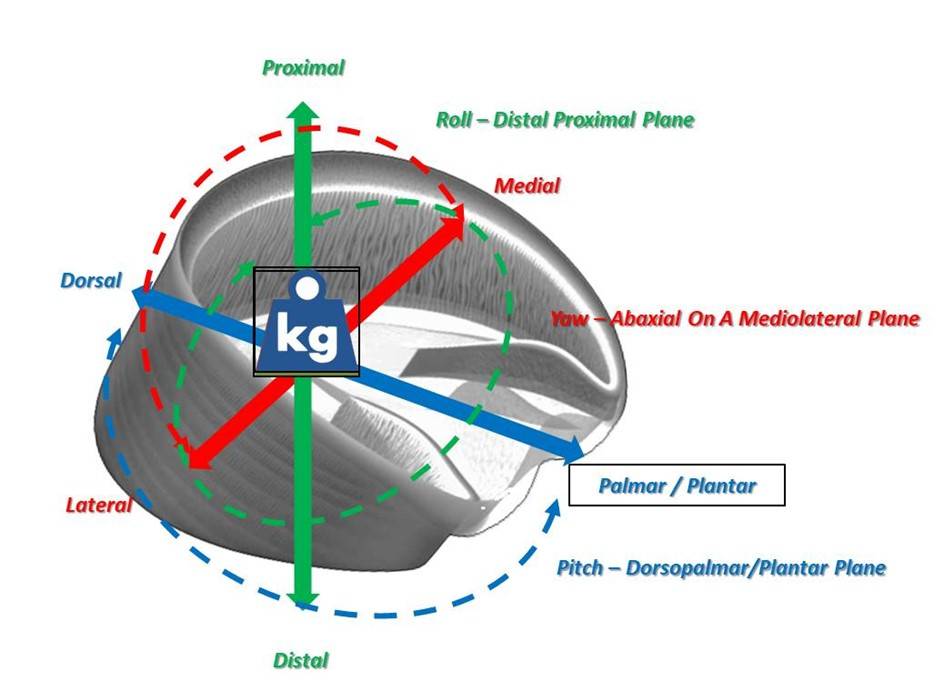
Kinetics
Is the subdivision of mechanics focused on the forces that act on a body to cause motion. Basically, a force is a push or a pull exerted by one body on another body. A force, such as a push or a pull, can’t be seen only the effect of a force on a body is visible. An applied force wants to change the motion of the body — to speed it up or slow it down in the direction the force is applied.
Sir Isaac Newton formulated a set of three laws describing the cause–effect relationship between the force applied and the changing motion, or acceleration, of a body. These three laws are the foundation for using kinetics to analyse both linear and angular motion. The application of basic mechanics and Newton’s laws of motions the comparison of results of ground reaction force studies in the vertical axis (hoof capsule distortion) with results of ground reaction force in the horizontal axis (hoof or shoe wear) should make it possible to identify the relationship between both forces.
Newton’s Laws of Motion
1. A body continues in a state of rest, or of uniform motion in a straight line, unless or until acted upon by a force.
2. The acceleration of a body is proportional to the force acting upon it, and takes place along the line of action of the said force.
3. Every force induces an equal and opposite reaction.
This first law defines the term Force. Force is something which, by its self, produces acceleration. No earthly body ever observed has a “natural” motion unaffected by force.
The second law is concerned with proportionality i.e. if a horse moves at 2 meters per second, we can state with confidence that the distance travelled is proportional to the time taken the acceleration of the horses body is proportional to the force acting on it.
The third law is probably the most difficult to deal with, when a force exists between two separate bodies A and B, the force exerted upon B by A is exactly equal to the force exerted upon A by B but opposite in direction. Newton’s third law makes the assertion that the Earth is being pulled up by your body with the same force that the Earth pulls you down to it (Gravity).
Linear kinetics
Linear kinetics investigates how forces affect the linear motion, or translation, of a body. The characteristics of a force include its size, direction, point of application, and line of action. Each characteristic influences the force’s effect on the body, and identifying the characteristics of each force applied to a body is an important step in kinetics. Typically farrier’s use the explanation of static equilibrium (figure 3) to describe the characteristics of a force and explain what makes gravity pull and friction push. A horse’s body during movement is usually acted on by several different external forces. The acceleration of the body is determined by the net force created by all the different forces acting at the same time creating what Newton describes as an unbalanced force.
According to Rooney (1967) the vertical force of the ground reaction force (GRF) is exerted all over the bearing surfaces of the hoof in contact with the ground. In mechanics one considers that “spread-out” force to be concentrated at a single point called the centre of pressure (CoP). That is done in order to simplify the calculations. It does not mean that “all” the force is concentrated at that point; it means that one can account for the mechanics of the foot if one considers that the dispersed forces are all concentrated at that one point. Rooney gives good mathematical and diagrammatic explanations of the linear forces acting on the hoof that allow them to be plotted accurately (figure 3). Rooney also gives a simple definition of CoP as follows: that if a triangular support were to be placed under the horse’s foot at the centre of pressure, then at mid stance the well conformed and geometrically proportioned foot (figure 3) would not tip forwards or backwards but balance.
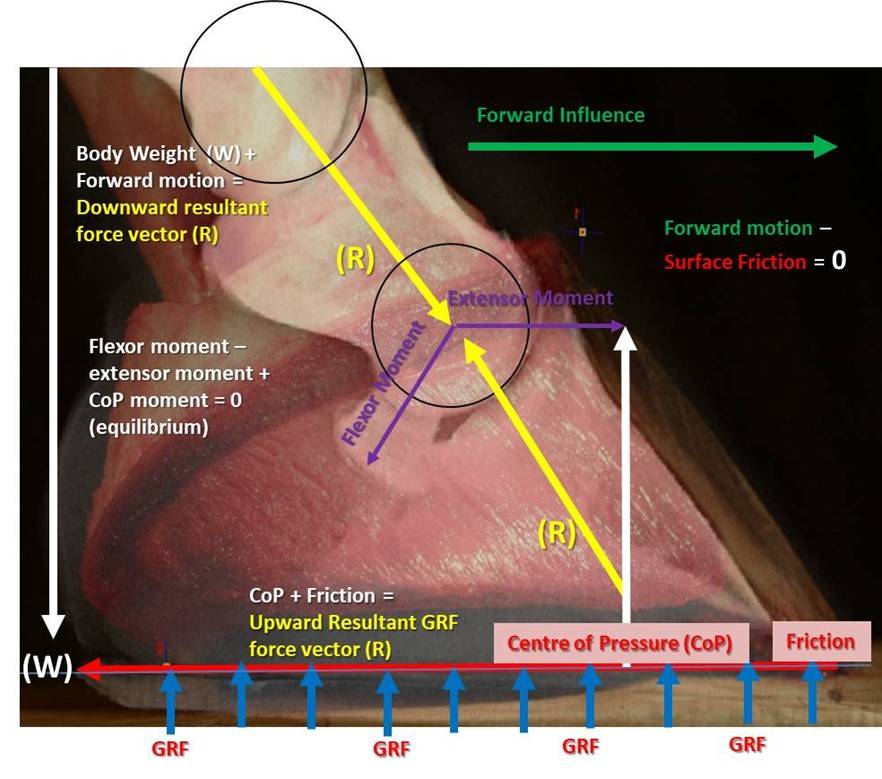
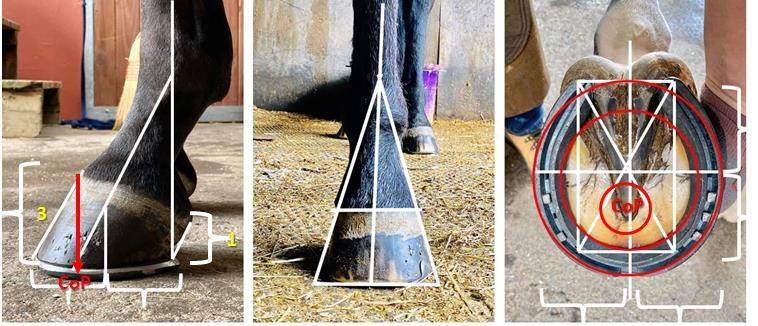
Angular kinetics
Angular kinetics investigates the causes of angular motion, or rotation. The turning effect of a force applied to a body is called torque. Torque is produced when a force is applied to a body at some distance from an axis of rotation (figure 5).
To describe movement, bio mechanists use a spatial reference system. All three dimensional structures, such as a horses foot, have three axis each of which has two coordinates. The three axes intersect at right angles to each other at the body or body segments centre of mass or balance point (CoP).The origin is at the intersection of the horizontal, mediolateral and vertical axes and is designated as zero (0) (figure?).
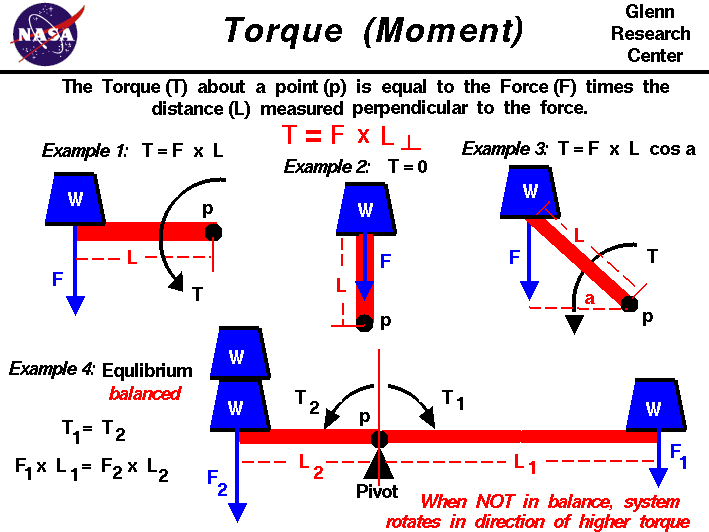
Standardizing a Reference Frame
To understand the nature of torque and how it affects the foot we must first use a standardised reference framework that applie to either the whole horse’s body or the individual segments such as the digit can move in many directions, creating a need to standardize the description of movement. Figure 6 shows the three standard planes and axis of the foot commonly used to describe magnitude and direction of movement.
A) Sagittal plane: The sagittal plane divides the body into right and left parts. When you look at foot from the side, you see it in the sagittal plane.
B) Frontal plane: The frontal plane divides the body into front (anterior) and back (posterior) parts. When viewing mediolateral hoof balance either from in front or behind someone, you looking through the frontal plane.
C) Transverse plane: The transverse plane, sometimes called the horizontal plane, divides the body into an upper (superior) and a lower (inferior) part. When looking at the solear border or looking down over the coronary border of the foot is being viewed in the transverse plane.
The planes are aligned at right-angles to each other. When a standard plane passes through the centre of gravity of the body it’s called a cardinal plane. The centre of gravity of the body or segment being studied is called the centre of mass which would be the balance point of the body if suspended in a free body diagram (no force acting upon it). A diagonal plane is a plane cutting across the cardinal planes at an angle. There are an infinite number of ways an oblique plane can cut through a body and these are described in common directional terms.
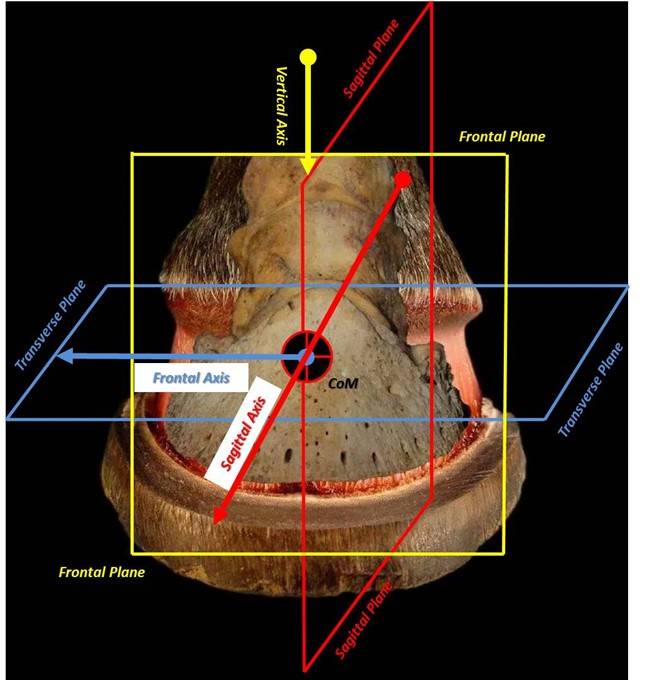

To be continued
